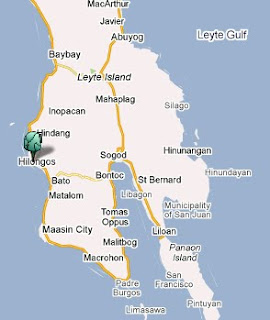Taking a trip to Hilongos, Leyte
One of Leyte Province’s biggest rice-producing municipality, Hilongos is also a major producer of copra and abaca that make it the most progressive town in the southwestern part of Leyte Province.
It is also one of the biggest fish-producing municipalities in Leyte, furthermore, it is where the oldest church and “cota” are located that were constructed way back in the 17th century. (This fact is duly recognized by the National Historical Institute).
It is likewise endowed with unexplored natural attractions like waterfalls, caves, beaches, and the graciousness of its people.
Location
Hilongos is located in the southwestern part of Leyte Province. It is bounded in the north by the municipality of Hindang, in the south by Bato, east by the municipalities of Bontoc and Sogod and in the west by the Camotes Sea, a rich fishing ground.
It has about 8,500 hectares of land having a slope of 0 to 3 percent that constitute a broad area of level to nearly level land which is generally suited for rice farming.
In the 2000 Census of Population and Housing, Hilongos registered its second lowest growth rate of 0.28% since population census was first undertaken in the year 1903. The lowest was registered in the census of year 1960 with 0.05% from its population of year 1948. In 2000, Hilongos has 10,763 households, an increase of 6.96% from its 1995 figure of 10, 062 with an average household size of five persons.
History
 Several years before the 12th century, a nomadic tribe from Iloilo came to the place by accident as they were pursued by some warlike Malayan sailors. This place has been called “Ilong” an adoption based obviously on the name of the Ilongot tribe.Other stories, however, had claimed that Hilongos is a corruption of the words “ilong and lomos”, the later referring to the frequent drownings at the nearby Salog river.It was sometime in the 12th century when Hilongos become highly popular. Amahawin, a powerful barangay chieftain, conquered the neighboring barangays, thereby extending his territory to what is now the towns of Inopacan, Hindang, Bato and Matalom.
Several years before the 12th century, a nomadic tribe from Iloilo came to the place by accident as they were pursued by some warlike Malayan sailors. This place has been called “Ilong” an adoption based obviously on the name of the Ilongot tribe.Other stories, however, had claimed that Hilongos is a corruption of the words “ilong and lomos”, the later referring to the frequent drownings at the nearby Salog river.It was sometime in the 12th century when Hilongos become highly popular. Amahawin, a powerful barangay chieftain, conquered the neighboring barangays, thereby extending his territory to what is now the towns of Inopacan, Hindang, Bato and Matalom. At present, Hilongos anticipates to deal with new opportunities, new challenges as it recognizes its lofty position in this southwestern part of Leyte being the fastest growing municipality in terms of income and population. Hilongos will face the challenge with a vision – A development-oriented government working hand-in-hand with the residents to produce justly distibuted improvements in the quality of life of all.
*******End****** p.s. the next posts will reveal what beauty this town possesses

No comments:
Post a Comment